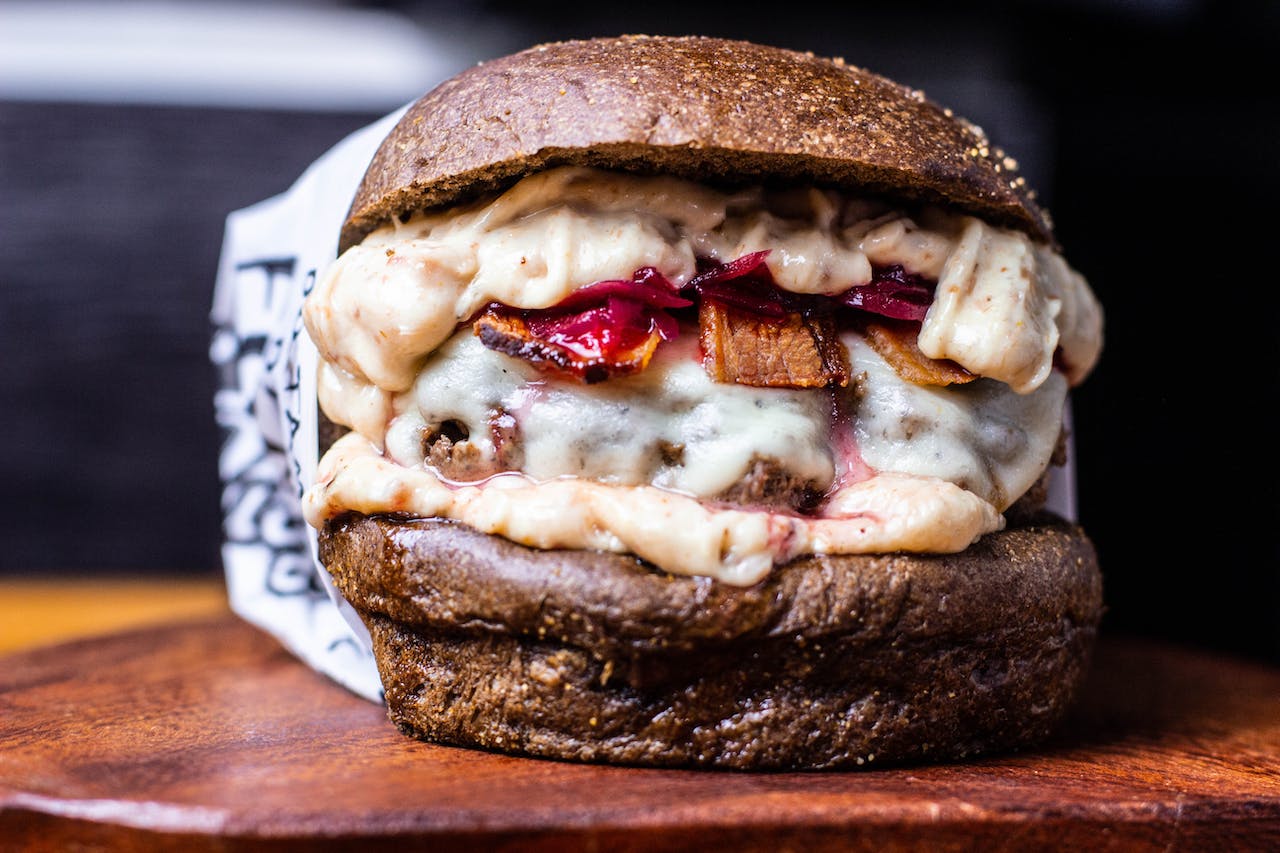The many “first” burger pioneers (as many people claim)
There are many claims of the authenticity regarding the hamburger’s origins in America.
As the German immigrants brought their own ground beef dish in the United States, the Americans eventually began to adapt it to suit their taste.
According to many sources, Louis Lassen was the first creator of the American hamburger. Lassen’s restaurant, Louis’ Lunch in New Haven, Connecticut, is said to be the first joint to serve hamburgers in 1900. The dish had no name yet until sailors from Hamburg labeled it; which is, of course, still open to dispute.
Lassen’s style of preparing the beef patty was by grilling. The cooked patty was then placed between two slices of bread. The first hamburger was served in this way as a response to a rush order from an impatient and demanding customer.
Another claim to the American burger’s origins is from Charlie Nagreen, also fondly addressed to as “Hamburger Charlie.” Nagreen was a gregarious, resourceful 15 year old boy who sold meatballs at the Seymour Fair (Outgamie County Fair today) in Seymour, Wisconsin. When he realized he found no success from selling them, he went with the idea of flattening the meatball between two slices of bread. In that way, visitors at the fair would be able to eat while walking around. And so the American burger, as some claimed, was born in Seymour, Wisconsin, in 1885.
More burger “inventors”
The hamburger’s ancestry also reportedly traces back to Otto Kuase, a German cook. His own rendition of the hamburger was fried in butter and then topped with a fried egg. White Castle, which is considered to be the first hamburger chain in America, supports this “fact.”
Brothers Frank and Charles Menches were also believed to be the true creators of the American burger – out of necessity to cater to their customers. In 1885 the brothers were originally selling pork sausages at a fair in Hamburg, New York. When they ran out of sausages, the brothers were forced to buy ground beef and fried it. When the brothers found out that the fried patties were tasteless, they decided to add ingredients they could find in their place – including coffee and brown sugar. According to their story, the name hamburger comes from Hamburg in New York (not in Hamburg in Germany), where the supposed creation of the dish took place.
Oscar Weber Bilby’s descendants also claim that he invented the first hamburger on a bun (a yeast bun) on the Fourth of July, 1891. Another claim comes from Fletcher Davis, who served the dish that comprised of fried ground patties, mustard, and onions between two slices of bread, along with a pickle on the side (not the inside of the burger, just yet). This was in the 1880’s.
Two pioneering burger chains: White Castle and McDonald’s
In the States, there are two early major burger chains: White Castle and McDonald’s.
In 1921, White Castle was established in Wichita, Kansas, making it as the country’s first fast food chain. It is famous for its signature “sliders” which are small, squared hamburgers (compared to regular-sized and round burgers). White Castle’s co-founder and cook Walt A. Anderson is chiefly credited as the inventor of the hamburger bun. White Castle also serves French fries, onion rings and frozen desserts.
Who doesn’t know McDonald’s? The McDonald’s restaurant chain traces back to San Bernardino, California.
Brothers Richard James and Maurice MacDonald founded the joint in 1940 as a barbecue restaurant. Then in 1948 they re-established their business as a burger fast food chain. Five years later they opened their doors to franchising. A milkshake salesman named Ray Kroc saw the immense potential of McDonald’s and partnered with the brothers. The success of the McDonald’s began to spread nationwide that it became McDonald’s Corporation. Kroc eventually purchased McDonald’s from the brothers for a total of $2.7 million, eventually setting new standards regarding food preparations and customer service.
Today McDonald’s is the world’s biggest fast food hamburger chain, serving billions of customers; there are about 33,000 McDonald’s outlets in 119 countries, and counting.
As the years passed, many more other burger chains mushroomed and established their regional presence like In-N-Out, Whataburger and Culver’s. Some US-based burger chains like Burger King and Wendy’s grew to become big global players.
The history of the hamburger, with lots of controversies, unverified claims and success stories, is as tasteful as the dish itself. And this is not the end of the story yet as long as there are many people in this generation — and generations to come — who will continue to relish that famous, oh-so-good, yummy hamburger.
